Summertime in Japan is a time for celebration.
Festivals abound during the hot, humid months of July and August, and people come out in droves to enjoy the food, music, games, and fireworks.

Here are some of the most popular summer festivals in Japan.
Table of Contents
What Is Matsuri 祭り
Matsuri is the Japanese word for festival.
These events are held throughout the year to celebrate various occasions, from harvests and New Year’s to births and marriages.
Read later – 10 Best New Year Celebrations In Japan
But matsuri are most commonly associated with summer when people take advantage of the warm weather and long days to enjoy food, games, and dance.
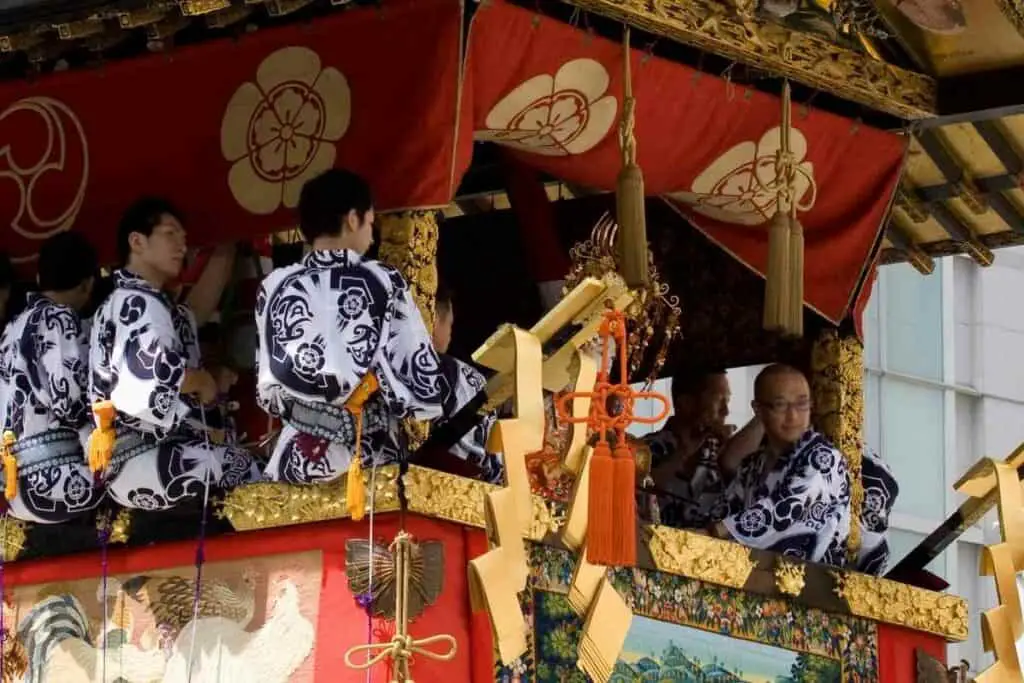
Matsuri are often organized by local shrines or temples, and each one has its own unique traditions.
Some feature elaborate processions with floats and musicians, while others revolve around more low-key activities like flea markets and street stalls.
But all matsuri share a sense of community and fun that makes them a beloved part of Japanese culture.
1. Gion Festival
The Gion Festival in Kyoto is one of the most well-known and popular summer festivals in Japan.
There are festival events that happen over the entire month, but the main events take place on July 17 and the three nights leading up to it.
The Gion Festival features a procession of floats called yamaboko.
The floats vary in size, but some of them are several stories tall and need over 40 people to pull them.
2. Aomori Nebuta Festival
The Aomori Nebuta Festival is one of the most visually engaging summer festivals.
It takes place in the city of Aomori in early August.
The highlight of the festival is the procession of huge floats called nebuta, which are adorned with traditional Japanese lanterns and feature images of gods, kabuki warriors, celebrities, animals, and landscapes.
Dancers, musicians, and gymnasts accompany the floats throughout the city.
If you attend the festival, you may be invited to join the dancers, or even try on the traditional haneto costume.
You may also like ?
3. Sumida River Fireworks Festival
The Sumida River Fireworks Festival is one of the oldest fireworks festivals in Japan.
It takes place on the last Saturday of July in Tokyo and attracts over a million spectators each year.
The festival dates back to the early Edo period when people used to set off fireworks to ward off evil spirits.
Nowadays – The event is more about enjoying the spectacular display of over 20,000 fireworks.
The fireworks are launched from barges on the Sumida River and can be seen from both sides of the river.
If you want to get a good view, make sure to arrive early and find a spot along the river.
4. Kishiwada Danjiri Festival
The Kishiwada Danjiri Festival is one of the biggest danjiri festivals in Japan.
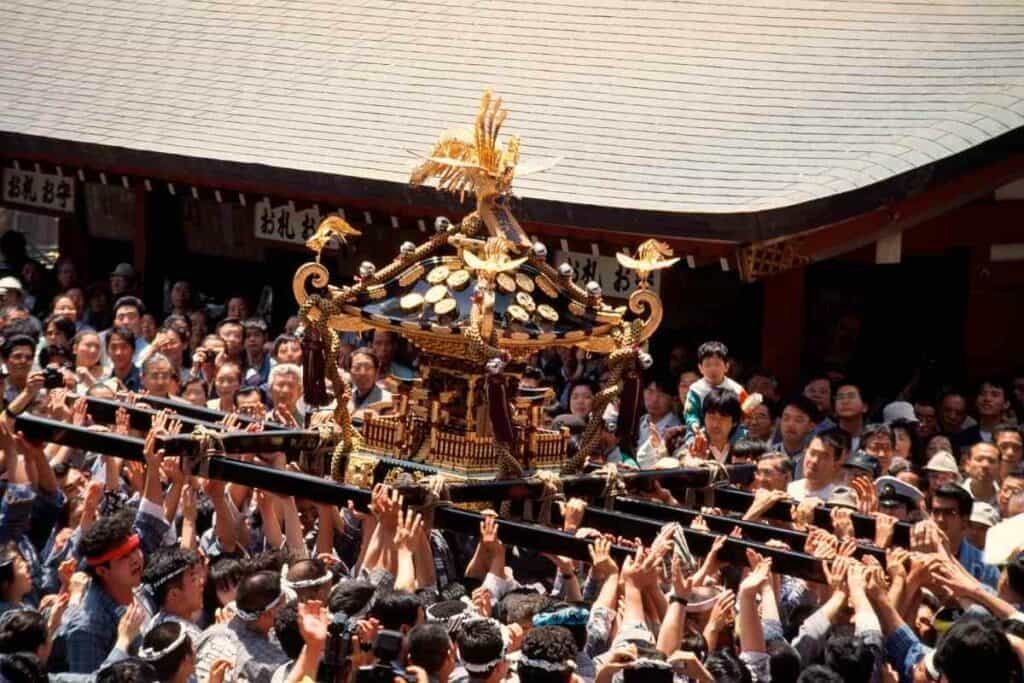
Danjiri is a type of float that is pulled through the streets on a wooden frame by a team of men.
The festival takes place in early September in the city of Kishiwada and features over 50 danjiri floats being pulled through the streets.
The floats are decorated with lanterns and other traditional Japanese motifs.
During the Festival – There are also street stalls selling food and games, and performances of traditional Japanese music and dance.
5. Obon Festival
The Obon Festival is a traditional Japanese festival that honors the spirits of one’s ancestors.
It is typically held in mid-August and lasts for three days.
During the festival, people visit their family gravesites and make offerings of food, flowers, and incense.
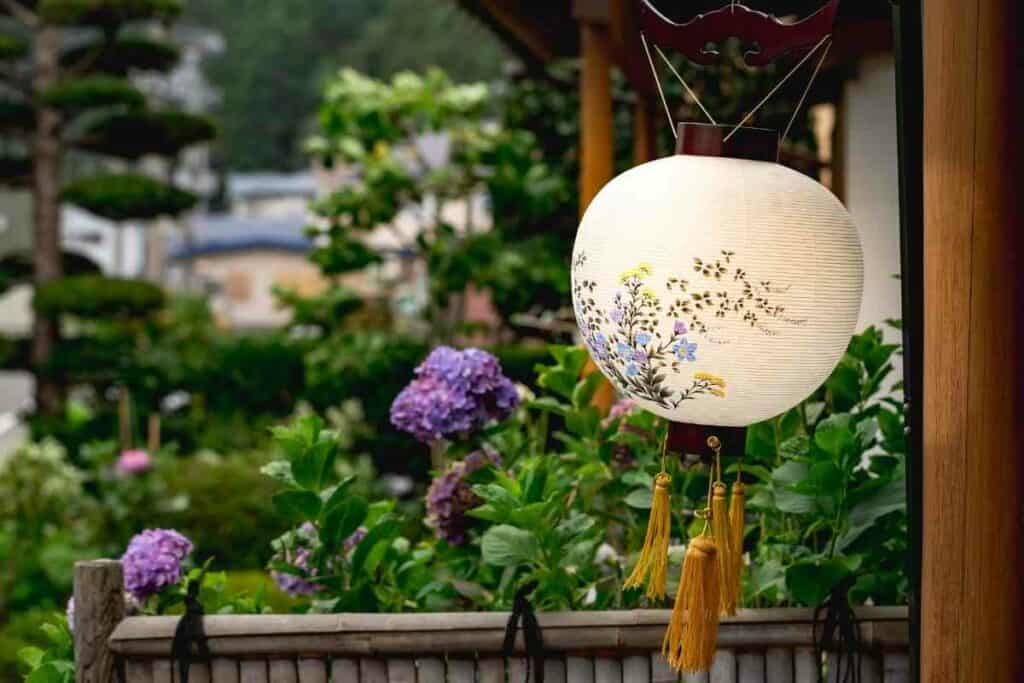
They also light lanterns to guide the spirits of their ancestors back to their homes.
On the last day of the festival, people float lanterns down rivers and seas to send the spirits on their way back to the other world.
The Obon Festival is a time for families to come together and remember their loved ones who have passed away.
6. Sendai Tanabata Festival
The Sendai Tanabata Festival is a star festival that celebrates the meeting of the stars Vega and Altair.
It is held from August 6-8 in the city of Sendai.
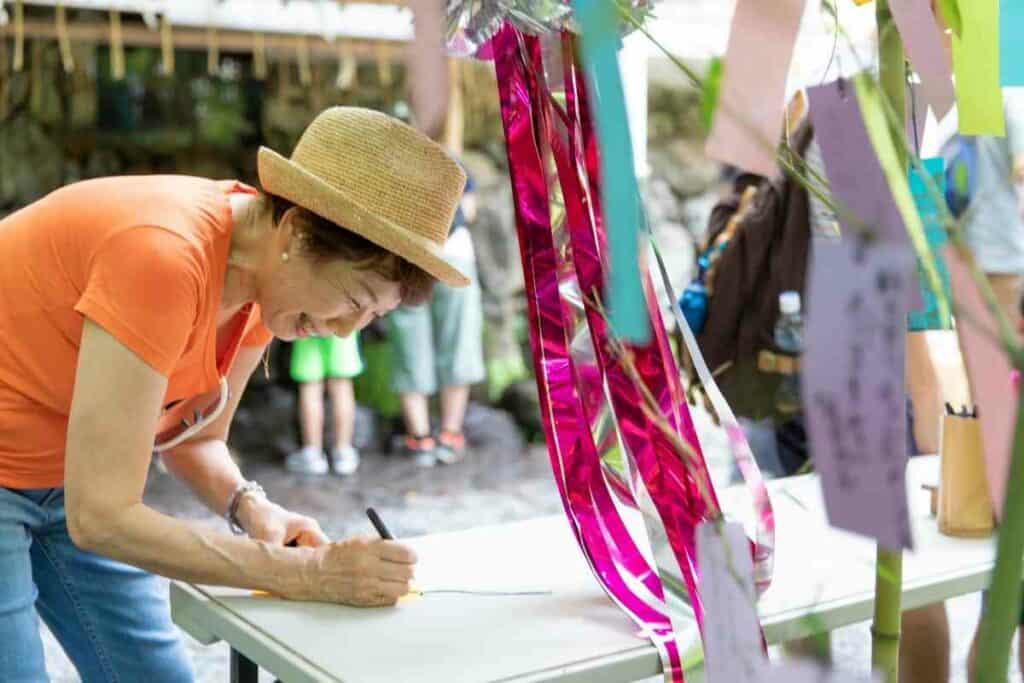
During the festival, people write their wishes on strips of paper and hang them on bamboo branches. The bamboo branches are then put on display throughout the city.
The Sendai Tanabata Festival is one of the most famous Tanabata festivals in Japan.
It features a variety of traditional and modern events, including live music, dance performances, and a parade of decorated floats.
You may also like ?
7. Hakata Gion Yamakasa Festival
The Hakata Gion Yamakasa Festival is a summer festival that takes place in the city of Fukuoka in early July.
The highlight of the festival is the yamakasa, a race in which teams of men carry ornately decorated floats through the streets.
The yamakasa dates back to the 14th century when it was used to pray for good health and protection from floods.
Nowadays, the race is more about competition than religion, and teams of men from all over Fukuoka compete to see who can complete the course the fastest.
8. Akita Kanto Festival
The Akita Kanto Festival uses poles and lanterns to celebrate the summer harvest.
It is held from August 1-7 in the city of Akita.
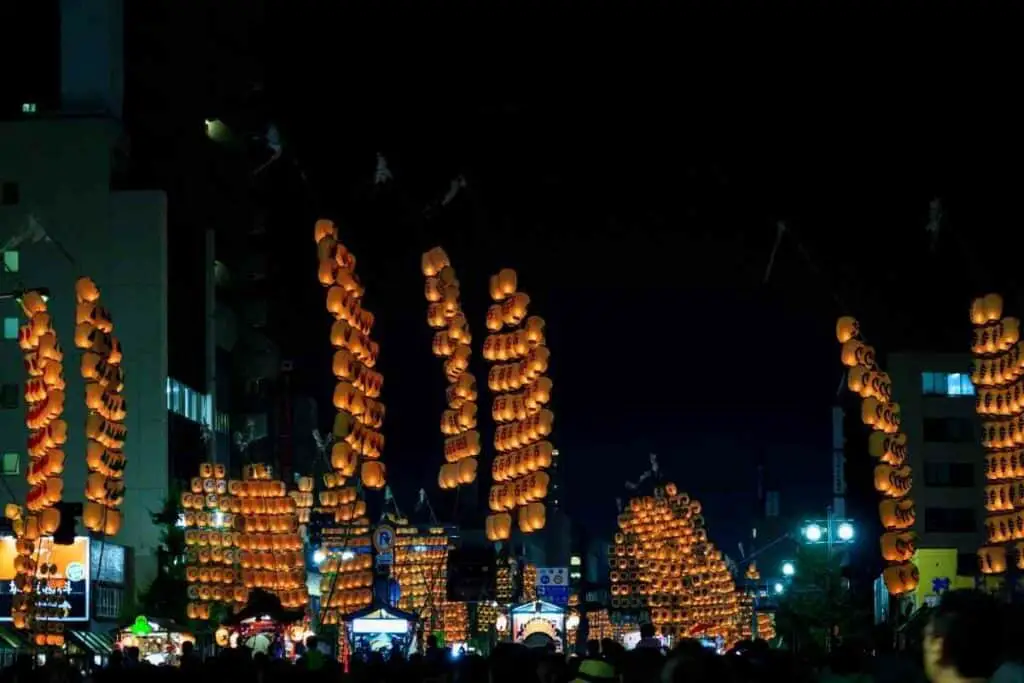
During the festival, teams of men compete to see who can balance the most kanto (lanterns) on their poles.
The record is currently held by a team from Akita City, who managed to balance 46 lanterns on a single pole!
In addition to the kanto competition, there are also performances of traditional Japanese music and dance, as well as street stalls selling food and other items.
9. Nara Yosakoi Soran Festival
The Nara Yosakoi Soran Festival is a dance festival that takes place in early June.
It features teams of dancers performing traditional Japanese dances to modern pop music.
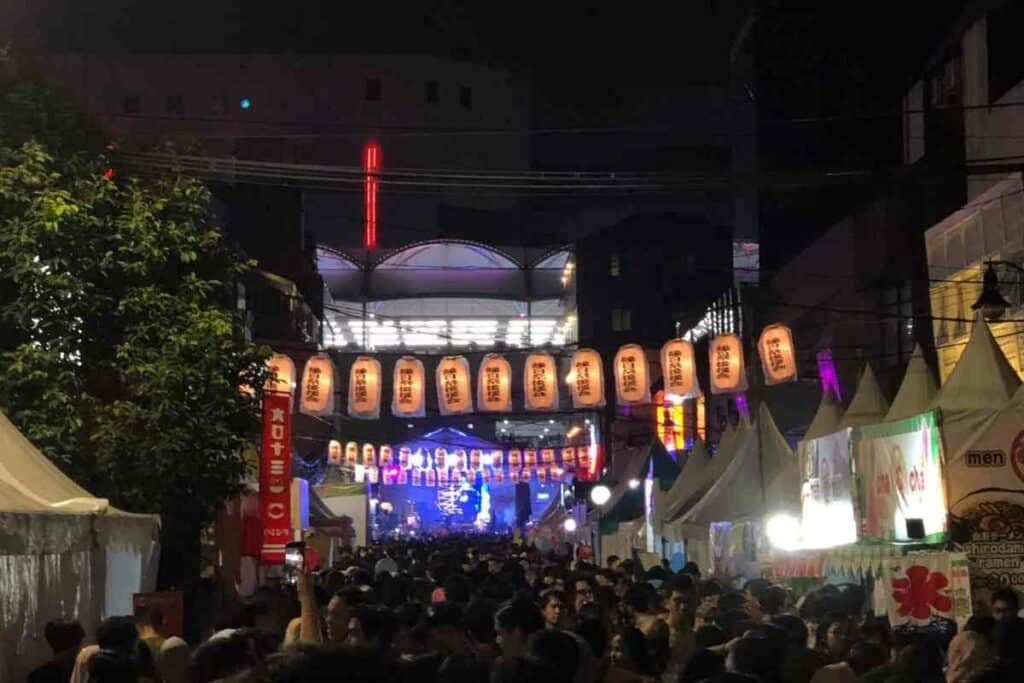
The festival originated in the city of Kochi in 1954, but it has since spread to other parts of Japan.
The Nara Yosakoi Soran Festival is one of the largest and most popular yosakoi festivals in the country.
If you’re in Nara during the festival, make sure to check out the performances. They’re sure to put a smile on your face!
10. Mitama Festival
The Mitama Festival is a very popular festival that attracts almost 300,000 people each year.
It is held in mid-July at the Yasukuni Shrine in Tokyo.
The festival is a time to remember and honor the spirits of those who have died in the war.
During the festival, people walk through the shrine grounds carrying lanterns. The lanterns are decorated with the names of deceased loved ones.
For an application fee, you can bring your own lantern and have it lit with all of the others.
For a Large Lantern – You would pay ¥12,000 and ¥3,000 for a small one. This works out to approximately $80 for a large lantern and $20 to register a small one.
There are also a variety of food and drink stalls, as well as stage performances of traditional Japanese music and dance.
11. Soma Nomaoi Festival
Do you want to see people dressed up in full samurai gear riding horses?
If so, you should check out the Soma Nomaoi Festival!
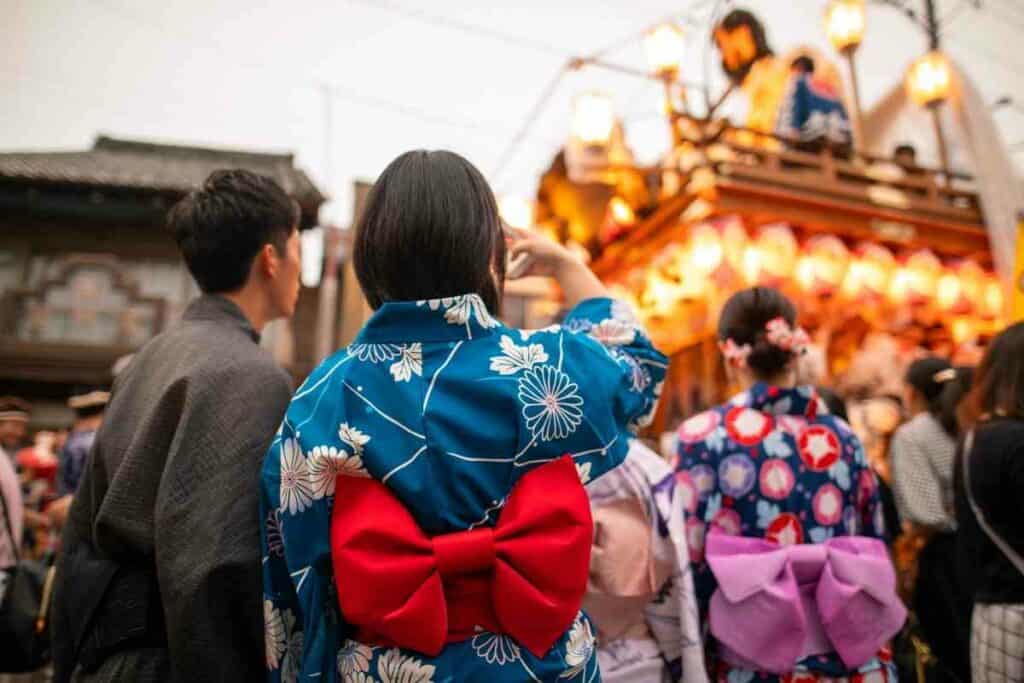
The festival is held from July 25-28 in the city of Soma in Fukushima Prefecture.
It features a variety of traditional events, including horse races, archery contests, and flag-carrying competitions.
The highlight of the festival is the nomaoi, a race in which teams of samurai ride horses through the streets of the city.
The nomaoi dates back to the 11th century, when it was used to train soldiers for battle.
Nowadays, the race is more about competition than training. Teams of riders from all over Fukushima compete to see who can complete the course the fastest.
12. Fukagawa Hachiman Festival
The Fukagawa Hachiman Festival is a water-throwing festival in which participants throw water at each other to cleanse themselves of bad luck.
It is held from August 12-15 in the Fukagawa area of Tokyo.
The highlight of the festival is the mikoshi (portable shrines) competition, in which teams of men compete to see who can carry the heaviest mikoshi.
It won’t be carried, but the heaviest mikoshi sits on a shrine and is displayed for the event. It’s covered in many different precious stones including diamonds, sapphires, and rubies.
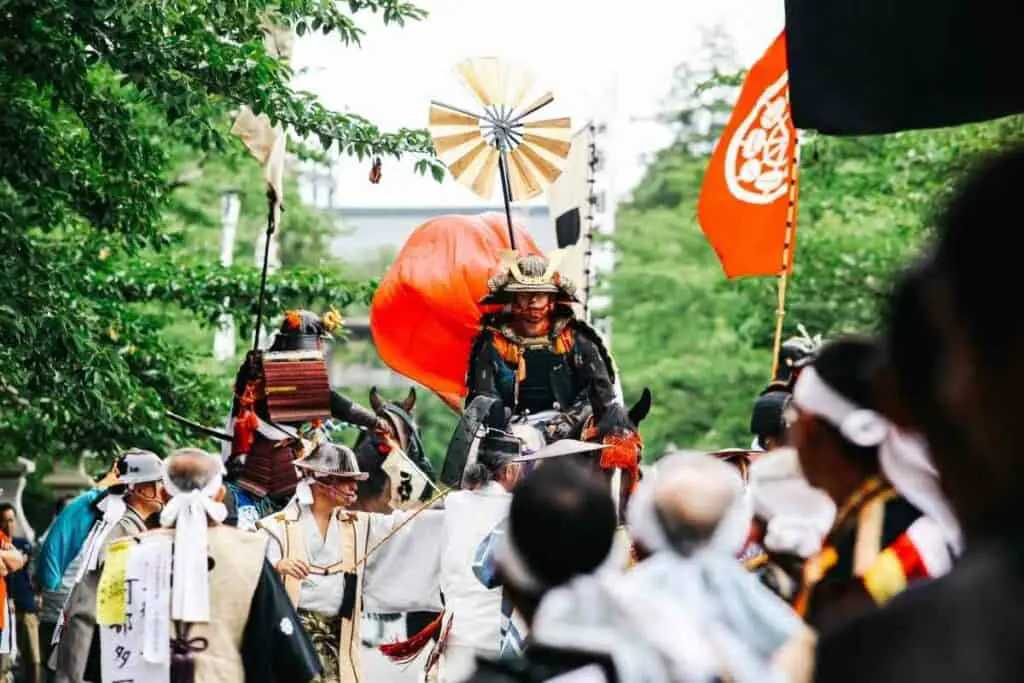
This mikoshi is incredibly valuable, sitting at approximately 1 billion yen or a little over $7,000. It will be heavily guarded, but it is absolutely worth seeing.
Final Thoughts
Summertime in Japan is a time for celebration, and the festivals listed above are some of the most popular events of the season.
These festivals are a great opportunity to experience traditional Japanese culture and food, as well as enjoy some spectacular fireworks displays or processions of illuminated floats.
If you’re visiting Japan during summertime, be sure to check out one of these festivals!
In Case You Missed It
- 12 Things Tourists Should NEVER Say in Japan
- Kissing Robot: Exploring the Popularity of the Chinese Kissing App
- Unlocking the Secret Dating Rituals Only Locals Know in Japan
- Samurai Armor: Ancient Protection for Japan’s Elite Warriors
- 10 Amazing Facts About Schools in Japan: Unique Traditions and Educational Practices
- Where can you see snow monkeys in Japan: Best locations and viewing tips









